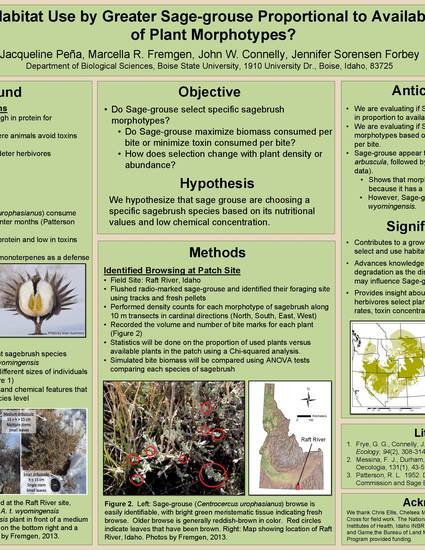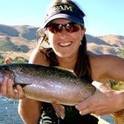
Jennifer Forbey
Greater Sage-grouse (Centrocercus urophasianus; hereafter, sage-grouse) select sagebrush plants for food that are high in protein. However, sagebrush produce toxins called monoterpenes that can inhibit enzymatic reactions and interrupt cellular processes and therefore result in decreased intake by sage-grouse. Moreover, species, subspecies, populations, and morphotypes of sagebrush can vary in the concentration of toxins produced. Preliminary analysis has shown that different morphotypes of sagebrush have different chemical profiles, and this may influence selection at a scale below species. Our research aims to determine whether sage-grouse select specific morphotypes of sagebrush to maximize biomass consumed per bite or minimize toxin consumed per bite and, how that selection changes with plant density or abundance. We flushed radio-marked sage-grouse and identified their foraging site using tracks and fresh pellets. At each used patch, we performed density counts for each morphotype of sagebrush along atransect, and recorded the volume and number of bite marks for each plant. We will evaluate if sage-grouse browse certain morphotypes in proportion to their availability, or if they differentially select morphotypes to browse based on biomass per bite or toxin concentration per bite. This research contributes to a growing understanding of how sage-grouse select and use habitats throughout the year, which is increasingly important as habitat availability decreases, the distribution of specific morphotypes change and remaining landscapes are degraded. Additionally, this research provides insight about plant-herbivore interactions and how herbivores select plants to consume, based on biomass intake rates, toxin concentration, or availability of plants.
Available at: http://works.bepress.com/jennifer_forbey/50/
